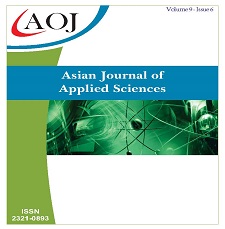Computer Network Attack Detection Using Enhanced Clustering Technologies
DOI:
https://doi.org/10.24203/ajas.v9i6.6839Keywords:
FFNN, KDD, K-means, DB Scan, Training, Testing, Intrusion, Attack, Weights, PerformanceAbstract
The need for security means has brought from the fact of privacy of data especially after the communication revolution in the recent times. The advancement of data mining and machine learning technology has paved the road for establishment an efficient attack prediction paradigm for protecting of large scaled networks. In this project, computer network intrusions had been eliminated by using smart machine learning algorithm. Referring a big dataset named as KDD computer intrusion dataset which includes large number of connections that diagnosed with several types of attacks; the model is established for predicting the type of attack by learning through this data. Feed forward neural network model is outperformed over the other proposed clustering models in attack prediction accuracy.
References
Habibzadeh, H.; Nussbaum, B.H.; Anjomshoa, F.; Kantarci, B.; Soyata, T. A survey on cybersecurity, data privacy, and policy issues in cyber-physical system deployments in smart cities. Sustain. Cities Soc. 2019, 50, 101660.
Gartner. Gartner’s Top 10 Security Predictions 2016. Available online: https://gtnr.it/2vRorda (accessed on 1 February 2020).
Geer, D. The Internet of Things: Top five threats to IoT devices. Available online: https://bit.ly/2UVixkF (accessed on 1 February 2020).
Ande, R.; Adebisi, B.; Hammoudeh, M.; Saleem, J. Internet of Things: Evolution and technologies from a security perspective. Sustain. Cities Soc. 2019, 54, 101728, doi:10.1016/j.scs.2019.101728.
Riahi, A.; Challal, Y.; Natalizio, E.; Chtourou, Z.; Bouabdallah, A. A Systemic Approach for IoT Security. In Proceedings of the 2013 IEEE International Conference on Distributed Computing in Sensor Systems (DCOSS), Cambridge, MA, USA, 20–23 May 2013.
Jesus Pacheco, S.H. IoT Security Framework for Smart Cyber Infrastructures. In Proceedings of the IEEE International Workshops on Foundations and Applications of Self* Systems, Augsburg, Germany, 12–16 September 2016.
Mijwil, M. M., and Abttan R. A., “Artificial Intelligence: A Survey on Evolution and Future Trends,” Asian Journal of Applied Sciences, vol.9, no.2, pp:87-93, April 2021, https://doi.org/10.24203/ajas.v9i2.6589
Gauravaram, P. Blockchain for IoT security and privacy: The case study of a smart home. In Proceedings of the 2017 IEEE International Conference on Pervasive Computing andCommunications Workshops (PerCom Workshops), Kona, HI, USA, 13–17 March 2017.
Yao, X.; Han, X.; Du, X.; Zhou, X. A Lightweight Multicast Authentication Mechanism for Small Scale IoT Applications. IEEE Sens. 2013, 13, 3693–3701. [CrossRef]
Butun, I.; Morgera, S.D.; Sankar, R. A Survey of Intrusion Detection Systems in Wireless Sensor Networks. IEEE Commun. Surv. Tutor. 2014, 16, 266–282.
Debar, H.; Dacier, M.; Wespi, A. Towards a taxonomy of intrusion-detection systems. Comput. Netw. 1999, 31, 805–822.
Meng, G.; Liu, Y.; Zhang, J.; Pokluda, A.; Boutaba, R.Collaborative Security: A Survey and Taxonomy. ACM Comput. Surv. 2015, 48, 1:1–1:42.
M. R. Zaidan, "Power System Fault Detection, Classification And Clearance By Artificial Neural Network Controller," in 2019 Global Conference for Advancement in Technology (GCAT) , Bangalore, 2019.
NAMASUDRA, Suyel, et al. Towards DNA based data security in the cloud computing environment. Computer Communications, 2020, 151: 539-547.
NAMASUDRA, Suyel, et al. Towards DNA based data security in the cloud computing environment. Computer Communications, 2020, 151: 539-547.
Mutar D. S., "Decoding of Convolutional Codes Using Viterbi Algorithm", Journal of Positive Sciences, vol.2021, no.3, pp:1-5, 2021.
Islabudeen, M., & Devi, M. K. (2020). A smart approach for intrusion detection and prevention system in mobile ad hoc networks against security attacks. Wireless Personal Communications, 112(1), 193-224.
HALDORAI, Anandakumar; RAMU, Arulmurugan. Canonical Correlation Analysis Based Hyper Basis Feedforward Neural Network Classification for Urban Sustainability. Neural Processing Letters, 2021, 53.4: 2385-2401.
ANTOLAK, Ernest; PUŁKA, Andrzej. Energy-Efficient Task Scheduling in Design of Multithread Time Predictable Real-Time Systems. IEEE Access, 2021, 9: 121111-121127.
OZANICH, Emma; GERSTOFT, Peter; NIU, Haiqiang. A feedforward neural network for direction-of-arrival estimation. The journal of the acoustical society of America, 2020, 147.3: 2035-2048.
BELARCHE, Lahoucine, et al. Three-dimensional simulation of controlled cooling of electronic component by natural and mixed convection. Thermal Science, 2020, 00: 181-181.
Downloads
Published
Issue
Section
License
Copyright (c) 2022 Dhamyaa Salim Mutar

This work is licensed under a Creative Commons Attribution-NonCommercial 4.0 International License.
- Papers must be submitted on the understanding that they have not been published elsewhere (except in the form of an abstract or as part of a published lecture, review, or thesis) and are not currently under consideration by another journal published by any other publisher.
- It is also the authors responsibility to ensure that the articles emanating from a particular source are submitted with the necessary approval.
- The authors warrant that the paper is original and that he/she is the author of the paper, except for material that is clearly identified as to its original source, with permission notices from the copyright owners where required.
- The authors ensure that all the references carefully and they are accurate in the text as well as in the list of references (and vice versa).
- Authors retain copyright and grant the journal right of first publication with the work simultaneously licensed under a Attribution-NonCommercial 4.0 International that allows others to share the work with an acknowledgement of the work's authorship and initial publication in this journal.
- Authors are able to enter into separate, additional contractual arrangements for the non-exclusive distribution of the journal's published version of the work (e.g., post it to an institutional repository or publish it in a book), with an acknowledgement of its initial publication in this journal.
- Authors are permitted and encouraged to post their work online (e.g., in institutional repositories or on their website) prior to and during the submission process, as it can lead to productive exchanges, as well as earlier and greater citation of published work (See The Effect of Open Access).
- The journal/publisher is not responsible for subsequent uses of the work. It is the author's responsibility to bring an infringement action if so desired by the author.


